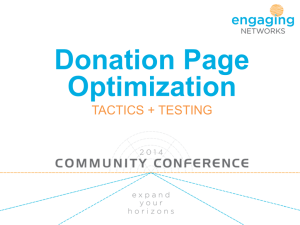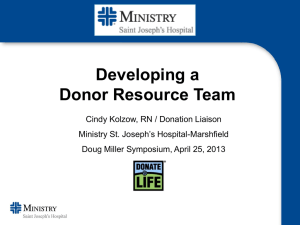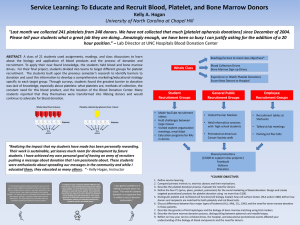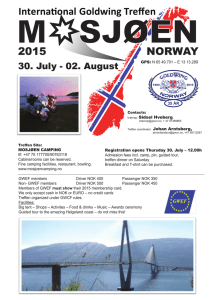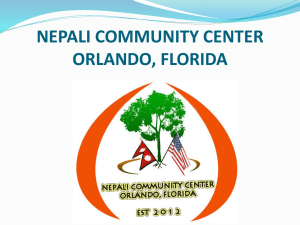Brinda Ramachandran_A prospective study to report the impact of
advertisement
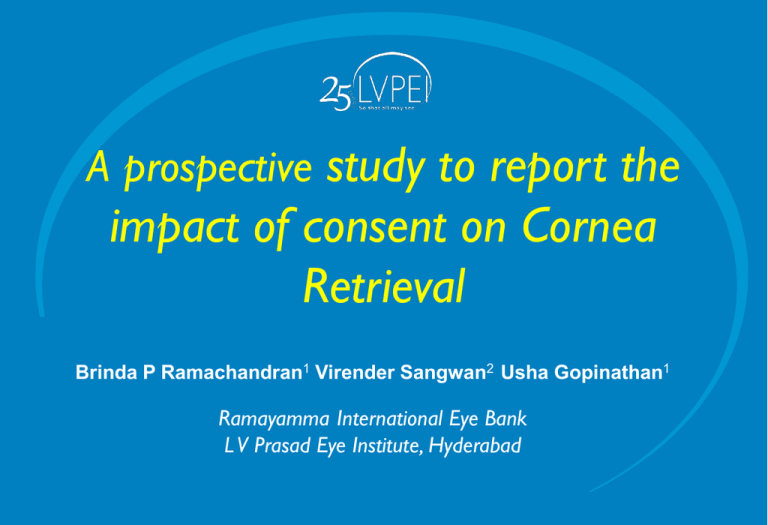
A prospective study to report the impact of consent on Cornea Retrieval Brinda P Ramachandran1 Virender Sangwan2 Usha Gopinathan1 Ramayamma International Eye Bank L V Prasad Eye Institute, Hyderabad Conflict of Interest Financial Disclosure NONE Introduction M Muraine et al in their study noted that: i. Asking the family of a dead patient to consider eye donation is one of the most difficult aspects of the donation process. ii. Health care professionals lack confidence & motivation to approach families to request for donation. Introduction A study by Greg A Diamond concluded that i. there must be a system for ensuring that families are asked for donation. ii. A designated person be notified at the time of death to determine suitability for donation and then contact the family for donation. Objective The purpose of this study was to understand who among the family members of a potential donor is ideal to be approached for counseling for eye donation Methodology i. ii. Study duration : 6 months 5 multispecialty Hospitals in which Hospital Cornea Retrieval Programme is conducted iii. A pre designed questionnaire to collect demographic information of the donor & the next of kin iv. Questionnaire filled by Eye Donation Counselors v. Questionnaire was filled for every approach Methodology Role of an Eye Donation Counselor • Daily monitoring of the donation process • • • • Counseling the donor families for eye donation Providing frequent hospital staff education sessions Providing family support Maintaining close relationship with the Hospital Administration Counseling the Donor family • Methodology Deciding to approach - Identifying the Decision maker/Influencer Timing of approach Steps in counseling • Introduction • Facts about eye donation • Objection handling • Closing & Withdrawal Data Analysis SPSS ver 17.0 software for windows - Univariable analysis – Chi Square test - Multivariable logistic regression analysis Results - 415 NoK were approached - 306 consented for eye donation Consent rate of 73% Results Age of donor (yrs) 0 – 20 21 – 40 41 – 60 >60 Odds Ratio 0.54 0.52 0.42 1.00 P value 0.182 0.046 0.006 Age of Donor was significantly associated with consent Results Age of next of Kin (yrs) 0 – 20 21 – 40 41 – 60 >60 Odds Ratio P value 3.08 (1.21,7.86) 3.03 (1.17,7.78) 1.00 0.019 0.022 Age of Nok was significantly associated with consent Results Gender (Next of Kin) Odds Ratio Male Female 315 70 1.17(0.65,2.12) 1.00 P value 0.602 Gender of NoK – not significantly associated Results Consent by Relationship of NoK Parents Children Siblings Spouse Others success/request (%) 49/65 139/184 40/61 43/64 35/42 75 75 65 67 83 The relationship of the donor has not played any role with regard to consent for eye donation Discussion Our study shows an overall increasing trend towards consent with an increase in the age of the deceased similar to that observed by M Lawlor et al. Our results also show that gender of NoK has no influence on the consent as found in other studies. A higher proportion (OR 3.08 95% CI) of consent was obtained from NoK less than 60yrs of age Discussion • The relationship of the NoK to the deceased has no influence on consent. Identifying the right family member to ask for donation increases the consent rate. •It appeared that a designated person with systematic training, & a defined skill set including knowledge of eye donation and day to day experience in performing requests increases the consent rate. •RIEB consent rates are some of the best in the world, with top performing eye banks across the world averaging around 73%. Conclusion •There is a greater need to educate younger generation about eye donation so as to enable them to act as motivators for enhancing eye donation rates. •The presence of a trained Eye Donation Counselor enhances the rate of consent thus increasing the donor numbers. Acknowledgement - Donor Families - Hyderabad Eye Institute (HEI) Thank you! L V Prasad Eye Institute www.lvpei.org Excellence Equity Efficiency


